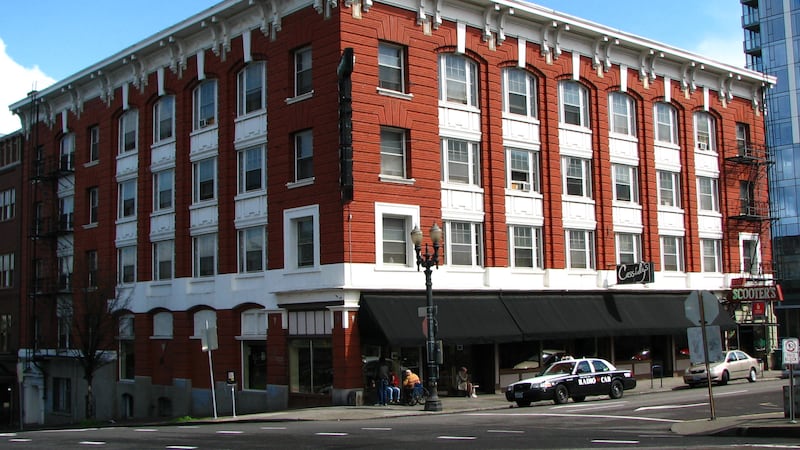The city of Portland is preparing to ask private building owners to do something the city itself has not done—seismically upgrade buildings that would collapse in an earthquake. And the buildings for which the city is responsible include low-income apartments housing many of Portland's most vulnerable citizens.
On May 9, the City Council will hear a resolution to eventually require seismic upgrades to the largest inventory of unreinforced masonry buildings in the Pacific Northwest.
Upgrading the 1,650 URM buildings scattered across Portland could cost private property owners hundreds of millions of dollars. But WW has learned the city also faces a sizable budget hole if it's required to upgrade URM buildings it financed to serve as affordable housing.
The URM resolution is four years in the making. Starting in 2014, city officials and a panel of outside experts prepared an inventory of properties, categorized them according to risk and developed new safety codes to address that risk.
The issue: In a catastrophic earthquake—which scientists say could occur at any time in the Cascadia Subduction Zone off the Oregon Coast—such buildings would crumble, resulting in widespread injuries and death.

But as the May 9 hearing approached last week, Mayor Ted Wheeler tapped the brakes.
Now, Wheeler wants to give owners of smaller buildings 20 years to comply, The Oregonian reported last week, rather than the 10 the city panel recommended. And he has proposed relaxing the requirements for securing floors to walls. The delay applies to all buildings with housing.
That helps ease the pressures on the city, too. As City Hall works through next year's budget, it appears the new safety requirements pose a problem for the city's own finances.
A Portland Housing Bureau memo obtained by WW identifies 34 URM buildings containing 2,090 residential units, all but 218 of which the city has either financed or owns.
Just to bring those buildings up to the new code would cost an estimated $20 million. And completing that seismic work, city officials determined, would trigger other, even more costly work.
"The seismic work cannot be done in isolation," says the Housing Bureau memo, dated Feb. 12, 2018. "As soon as seismic work begins, it will trigger additional rehab needs. Staff estimates at least $60 million will be needed to address the seismic and rehab needs of the buildings."
Most of the affordable housing units are owned and operated by nonprofit providers of low-income housing, such as Central City Concern, Home Forward and Reach Community Development. These organizations depend on the city to help them buy buildings, and they are unlikely to be able to afford seismic upgrades without additional public subsidies.
Former City Commissioner Steve Novick, who championed the push for unreinforced masonry upgrades, says the city should think of upgrading those buildings as a good investment.
"One way of looking at it is with the housing bond, we expect to build 1,300 units for $258 million," says Novick. "Being able to take 2,090 units that now aren't safe to live in and for $60 million make them safe to live in sounds like a comparative bargain."
The debate at City Hall will turn to how to pay for upgrading the affordable units.
News of the cost analysis comes little more than a month after the city approved its first round of bond sales for infrastructure upgrades. The program, championed by the mayor, is called "Build Portland." City Hall aims to use the money for park and street improvements.
City Commissioner Nick Fish is eyeing that money as a way to upgrade housing by creating grants or loans to "prevent displacement."
"Some of our most vulnerable community members are in affordable housing that we helped build," says Sonia Schmanski, Fish's chief of staff. "Commissioner Fish believes we have an obligation to protect these tenants. He wants to look at ways to prioritize affordable housing for early action."
The mayor's office has not ruled it out—at least for city-owned buildings.
The mayor's delay of the requirement comes after significant pushback from building owners, who put up an elaborate website, saveportlandbuildings.com, and began lobbying against the changes.
"You think the last 10 years of cherished old Portland businesses closing and beautiful old buildings being demolished has been bad?" reads an email circulated by the site's organizers to URM building owners. "You ain't seen nothing yet."
Of the 1,650 URM buildings the city has identified, about 85 percent are in commercial use, according to city figures.
Wheeler's spokesman Michael Cox says the mayor is putting together a committee of experts, building owners and tenants to figure out how to address the need for upgrades to the city's affordable housing.
"The amendment was introduced with consideration to small building owners and in the interest of preserving housing, avoiding displacement, and maintaining affordability," says Cox.
Over the next year, the Portland Housing Bureau will figure out how to address the requirement for affordable housing, Cox says. "PHB always said that they needed to know what the standard was in order to develop a realistic financial plan to meet it," he adds.
